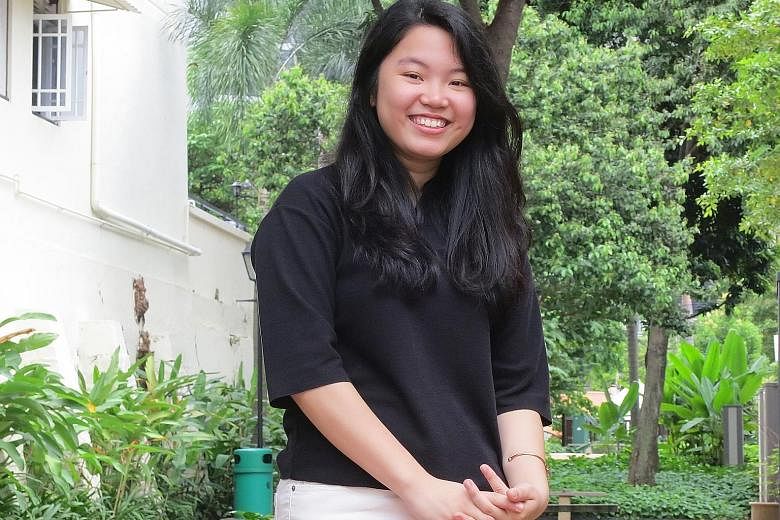One in nine adolescents said they have been victims of cyber bullying and close to half of them have, in turn, bullied others online, a large-scale study has found.
The study, which surveyed 3,319 students aged 12 to 17 from 28 schools, was done by the Singapore Children's Society and the Institute of Mental Health in 2014.
Some 40 per cent of victims said they also cyber-bullied others. Victims are also more likely to have recurring headaches, socio-emotional and behavioural problems, self-harming patterns and suicidal thoughts, compared with those who have not been bullied, according to key findings released to The Straits Times recently.
The study also found that both males and females are as likely to be cyber bullies, and the victim usually has an idea of who the bully is.
The bullies' top tactics are shaming, calling the victims names and spreading rumours about them via social networking sites and text messaging.
-
1 in 9
Adolescents who say they have been cyber bullied, in a survey of 3,319 students.
40%
Percentage of victims who say they have also cyber bullied others.
-
She feared for her safety
-
Joyce (not her real name) was not your typical meek or reserved cyber-bullying victim. She was a leader in university and often took part in committees and dialogues with the school management.
Five years ago, there was public concern regarding certain activities taking place on campus. She was one of the student representatives who met school officials to discuss the matter and come up with boundaries for such activities.
To her surprise, undergraduates who were dissatisfied with the new rules went online and took their frustration out on her.
"It was an organised effort as at least 50 people went to the student group's Facebook page to post negative comments, my personal Facebook page was also flooded," said Joyce, 25, now a public servant working in a statutory board.
"They blamed and mocked me as an ineffectual leader and called me names. When I tried to remove those comments, they posted more," she added.
The online harassment became so bad that she feared for her safety and did not dare to walk around school alone. If she did not have friends to accompany her around, she would skip classes. "It was scary because I didn't know who those online people were and they could harm me in real life."
A study by the Singapore Children's Society and the Institute of Mental Health in 2014 found that 40 per cent of victims end up also bullying others in cyberspace. Joyce did retaliate when she was younger but later learnt not to do so.
In primary school, her friends perceived her as a "teacher's pet" and called her names, and spewed vulgarities on her blog. "I fought back with the name calling on my blog and whenever I walked past them in school," said Joyce.
She later learnt how to respond appropriately to such situations at cyber-wellness talks that a charity gave in her secondary school, and signed up as a volunteer to give those talks in other schools.
So she did not panic when she was cyber-bullied in university. She reported the incident to the school and was told not to respond to the posts. Her friends rallied around her and went online to defend her. "I felt terrorised and helpless but with encouragement from my friends, I did not feel alone."
Janice Tai
"The findings are significant because the use of technology is becoming more prevalent and if we are not careful, the problem will grow and we will have an increasingly unhealthy online culture," said Ms Iris Lin, senior social worker at Fei Yue Community Services.
Cyber bullying is bullying in cyberspace where harm is intentionally and repeatedly inflicted upon an individual through the use of electronic devices. Counsellors say victims easily turn into bullies themselves because they learn to imitate behaviour that they know causes hurt.
"Such behaviours are also normalised and they become desensitised. The more abuse they receive, the more mean they become to others," said Mr Poh Yeang Cherng, principal consultant at cyber-wellness consultancy firm Kingmaker Consultancy.
Mr Shem Yao, assistant manager at Touch Cyber Wellness, said some social media platforms have features that allow users to remove traces of their aggressive action after a certain period of time; this emboldens bullies because their actions may not be traceable.
"Cyber bullies may also employ cyber-baiting tactics by provoking victims to react in a negative manner, and then posting the recorded video or picture online to shame and embarrass the victim," said Mr Yao.
Counsellors stress need to foster healthier online culture
A 2012 Microsoft study found that Singapore had the second-highest rate - 58 per cent - of online bullying worldwide, after China.
The two countries were the only two of the 25 surveyed where bullying online was more pervasive than in the real world.
A new Protection from Harassment Bill that covers online bullying was passed in 2014.
The law, which prescribes fines and jail terms, also provides for the court to order counselling or probation in the case of child offenders.
Those who are the target of false and malicious online content can similarly get orders requiring the content to be taken down and for correction notifications to be published in their place.
Counsellors say they have not encountered instances where the law was used to prosecute cyber bullies.
Apart from legal recourse, Mr Yao said empowering students with various channels of reporting such aggressive behaviour to the school authorities will be helpful.
Ms Lin said other countries such as the United States have started online campaigns where people are urged to respond to disparaging comments with kind remarks instead.
The Media Literacy Council started a four-month Better Internet campaign last month to promote responsible online habits and safe Internet use. The campaign also addresses cyber bullying.
Said Ms Lin: "Given that almost one in two victims becomes cyber bullies themselves, we need to intervene fast, or such behaviour will spread rapidly."
Welcoming more efforts to tackle cyber bullying is recent polytechnic graduate Ena Su, 20, who used to bully a fellow secondary school classmate online because she was not aware that her comments in cyberspace could cause as much hurt as criticisms made in real life.
"This girl was clingy and she kept sticking with us despite our hints that we did not want her to," said Ms Su. "So I used vulgarities and wrote mean things about her on Twitter and on her blog."
The traumatised victim confided in a friend, who persuaded her to tell a teacher about it. When the teacher counselled them, Ms Su was shocked to see the victim crying.
"I didn't show it but I felt sorry. Hiding behind the computer screen brought out the worst in me," said Ms Su. "If you are bullied, speak up and stand up to it."


